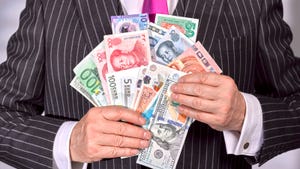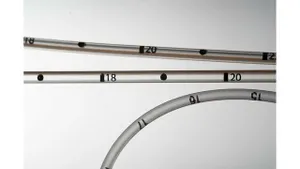New Balance wins trademark dispute in China, but at what cost?
New Balance won $1.5 million in damages and legal costs—probably not much in the grand scheme of things. Now all it has to do is collect the money.
August 23, 2017

 The headline in the Business Day section of the Aug. 22 edition of the New York Times read: “New Balance Wins $1.5 million in Landmark China Trademark Case.” The reason the Times called this a landmark case is that very few foreign companies win when they go up against their Chinese counterparts that are infringing on patents and trademarks. China plays by Chinese rules—not global patent/trademark laws—so winning is next to impossible.
The headline in the Business Day section of the Aug. 22 edition of the New York Times read: “New Balance Wins $1.5 million in Landmark China Trademark Case.” The reason the Times called this a landmark case is that very few foreign companies win when they go up against their Chinese counterparts that are infringing on patents and trademarks. China plays by Chinese rules—not global patent/trademark laws—so winning is next to impossible.
However, New Balance managed to win $1.5 million in damages and legal costs against three Chinese companies that it claimed infringed on its “trademark signature slanting ‘N’ logo.” Lawyers said it was the largest trademark infringement award ever granted to a foreign business in China.
The ruling came just three days after President Trump’s announcement that the United States will pressure China over ongoing allegations of intellectual property theft. An article in the August 14 Wall Street Journal (“U.S. Presses China on Tech-Theft Allegations”) said that, according to White House aides, “President Donald Trump would sign a directive . . . ordering his trade representative to start a formal probe into whether Chinese government agencies and companies were unfairly acquiring valuable patents and licenses from U.S. firms, either through outright theft or by pressuring Americans to turn over their inventions as the price of entry into China’s market.”
The NYT received a copy of the decision from the Suzhou Intermediate People’s Court, which ruled that the three defendants “seized market share from New Balance” and “drastically damaged the business reputation of New Balance.” The article also noted that many Chinese “counterfeiters have moved beyond just making knockoffs to copying everything about a brand, short of the entire name.”
New Balance went up against three companies—New Boom, New Barlun and New Bunren—all of which are “protected under China’s trademark law,” said the NYT, noting that it wasn’t the first time that New Balance has fought this battle. “Since it started selling shoes in China in 1995, it has fought against dozens of counterfeit manufacturers, battled a rogue supplier who exported its shoes at a deep discount and struggled over the use of its Chinese name in the courts.”
It’s an old story and a never-ending battle for companies that risked it all to sell more products into a market with billions of consumers. I’ve written countless times about counterfeit goods, involving everything from automotive parts made from off-spec plastic materials (the Aston-Martin accelerator pedal case) to cosmetic cases, toys, hair dryers and more.
The cost of recalls, replacing fake consumer products with the real products, payouts to injured parties, unsuccessful court battles in China and so forth has to be far more than any profits gained in these ventures. But companies continue to manufacture in China, and the fight to protect intellectual property goes on.
At least New Balance won $1.5 million—probably not much in the grand scheme of things—and now all it has to do is collect the money. Good luck with that!
About the Author(s)
You May Also Like




